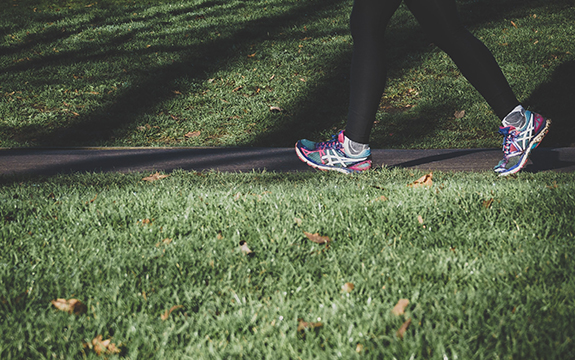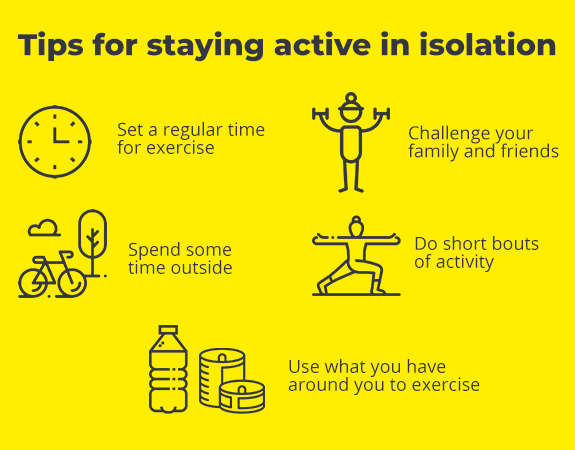Five tips for staying active in isolation

In Summary
- Exercise physiologist, Associate Professor Amanda Benson, shares her top five tips for incorporating exercise into your daily routine, while maintaining physical distancing practices
- She says keeping active is more important than ever during this time of restricted movement due to COVID-19
Staying active while physical distancing shouldn’t be a chore, says Associate Professor Amanda Benson, Course Director for Exercise and Sport Science at Swinburne.
“Try and include some aerobic (cardio) and resistance (strength) exercise in your day and find something that works for you in your current circumstances and also interests you,” she says.
Exercise: it’s essential
Exercise is considered an essential activity during the COVID-19 situation.
Associate Professor Benson is an exercise physiologist and says keeping active is especially important during this time of restricted movement.
“A reduction in cardiorespiratory fitness and muscle loss can lead to chronic disease. Maintaining a daily schedule which includes regular exercise helps to structure your day and also provides physical and mental health benefits,” she says.
Tips for staying active in isolation
Associate Professor Benson shares her top five tips for incorporating exercise as a regular part of your daily routine, while maintaining physical distancing practices.

Set a regular time
Find exercise you enjoy and can complete at a regular time each day – this will help you to create a routine. It might be a walk at the start and end of the day to help create boundaries between work and home, like your normal commute to and from work would.
Challenge your family and friends
Starting a daily or weekly exercise challenge with a family member or friend is a great way to have some fun, maintain social connections and stay accountable. You could set up a circuit or obstacle course in your house or backyard and track the results on a leader board, or exercise with a friend via video chat using an online workout video.
Get outdoors
Going outside provides a stimulus and sensory experience that you won’t get from spending time indoors. Consider exercising in your own garden or go for a walk, run or bike ride in your local area. It’ll do wonders for your motivation, mood and concentration, and can help reduce stress and anxiety. It will also benefit your cardiovascular and musculoskeletal systems.
Incorporate exercise ‘snacks’ into your day
Short bouts of brief intense activity (exercise ‘snacks’) throughout the day can be used to break up all the sitting you might be doing. If you are new to regular exercise, it can also be a good way to start. What about standing up during meetings or going for a short walk between meetings? Perhaps it’s 10 squats at various times of the day, or one minute of step-ups or wall pushups before you make your next cup of tea.
Use what you have around you
Body weight exercises are easy to do anywhere. You can use the steps at home for step-ups, or tin cans and milk bottles filled with water can add resistance to exercises if you don’t have weights at home. Wearables or apps (or your calendar) can help prompt you to move and track your activity.
Helpful resources
Exercise and Sport Science Australia (ESSA) have put together an Exercise Right At Home resource with more than 25 home workout videos that are freely available. The videos cover a range of exercises including strength and fitness, pregnancy and ‘Mums and Bub’s workouts, and even pilates for kids.
Associate Professor Amanda Benson is an accredited exercise physiologist with Exercise and Sport Science Australia (ESSA) with an interest in using exercise for the prevention and treatment of chronic disease. She is the Course Director for Exercise and Sport Science at Swinburne, and is a member of Swinburne's Sport Innovation Research Group.

